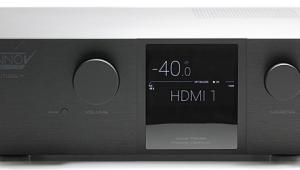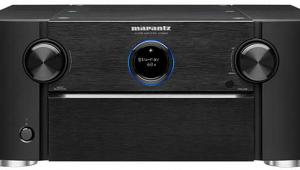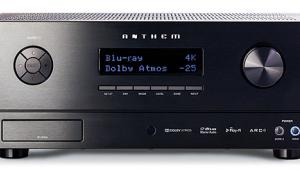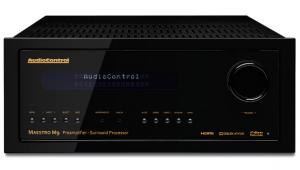Integra DHC-80.1 Surround Processor
 Price: $2,300 At A Glance: Bleeding-edge surround sound processing includes 9.2 Audyssey DSX • State-of-the-art video processing • Internet and home network streaming
Price: $2,300 At A Glance: Bleeding-edge surround sound processing includes 9.2 Audyssey DSX • State-of-the-art video processing • Internet and home network streaming
Third One’s a Charm
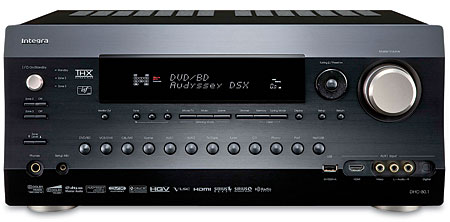
In the separates world, we seldom see a lot of change within a short period of time. With A/V receivers, manufacturers almost customarily update their lines yearly, introducing new features and aesthetics that beckon for your dollar. On the other hand, surround processors are usually a slow burn. New versions hit the shelves every few years. Plus, manufacturers offer upgrades to existing models, so you don’t have to buy new equipment every time there’s a new whiz-bang format.
Integra obviously doesn’t play by the same rules. It has introduced at least four different surround processors in the last three years. This is the third we’ve reviewed, and both of the previous models (the DTC-9.8 and DHC-9.9) earned our Top Pick status in the surround processor category. This year, Integra has introduced two new surround processors, the DHC-40.1 and the DHC-80.1. This lets consumers choose how feature rich they want their processor to be. For this review, we’ll check out the flagship of Integra’s line, the DHC-80.1. This model ups the ante considerably, with a bevy of new inputs, surround processing, and features.
Connectivity, and Then Some
The DHC-80.1 is a completely new surround processor compared with its earlier siblings. The DTC-9.8 and DHC-9.9 shared the same aesthetics, with some minor DSP updates that allowed additional processing features. That’s not the case here. Although the front panel is similar to previous Integra processors, the DHC-80.1 has a completely new chassis. It includes more inputs and outputs, plus a lot of new hardware inside. The DHC-80.1 features a spruced-up menu navigation control, and Integra includes an HDMI and USB input on the front panel, which adds major convenience. You can plug and play your HDMI devices or simply enjoy some new tunes via a USB stick.

While you can fully operate the inputs, volume, and settings from the front panel, Integra still doesn’t include a dimmer that completely turns off the front-panel display. The dimmer considerably reduces the front panel’s overall brightness, but my bat cave theater room demands total darkness.
You’ll find the biggest changes from previous Integra models on the back panel. Integra has really upped the connectivity in this new design. It includes seven HDMI 1.3a inputs and two outputs. More and more components have moved to HDMI connectivity, so you won’t be pulling your hair out because you don’t have enough inputs. The DHC-80.1 also adds a whopper with full Internet connectivity via an Ethernet connection. This connection was on Integra’s previous surround processors, but it didn’t support firmware updates or the bevy of Internet audio options that this one has.
The DHC-80.1 also adds two sets of 9.2-channel outputs for connecting to an outboard amplifier—one is single-ended on RCAs, and the other is balanced on XLRs. The .2 means that you can configure two independent subwoofer outputs. This even extends to the Audyssey MultEQ XT calibration. It provides optimal equalization/room correction at two different subwoofer locations; it doesn’t treat both subs in the room as one. While the DHC-80.1 isn’t a dual-differential design, the XLR outputs help eliminate unwanted noise that a long run of cables can pick up between the processor and the amplifier. Integra also includes a 7.1-channel analog input that you can use for a DVD-Audio, SACD, or HD source component.
The DHC-80.1 has a twochannel XLR input for high-end analog audio sources. And it includes plenty of digital inputs in both the coaxial and TosLink flavors.
The DHC-80.1 includes Sirius and HD Radio outboard antenna connections, and Integra also offers an iPod dock. The Ethernet connection lets you “tune in” to Internet radio and access some of the bigger names in streaming music, including Pandora, Rhapsody, and Sirius Internet. I’ve become a huge fan of Pandora, so its inclusion would be enough to make me upgrade from the DHC-9.9. Rhapsody is also a great way to hear the songs you want almost instantly. The Ethernet connection also lets you access your home music library. It’s compatible with DLNA, Windows Media Connect 2.0, and Windows Media Player 11. Supported formats include MP3, WMA, WMA Lossless, FLAC (up to 96 kilohertz), WAV, AAC, Ogg Vorbis, and Linear PCM. This means you could dump your whole music library onto a file server in full lossless resolution and let the Integra stream it through. This would save you the trouble of finding your next media server.
- Log in or register to post comments

